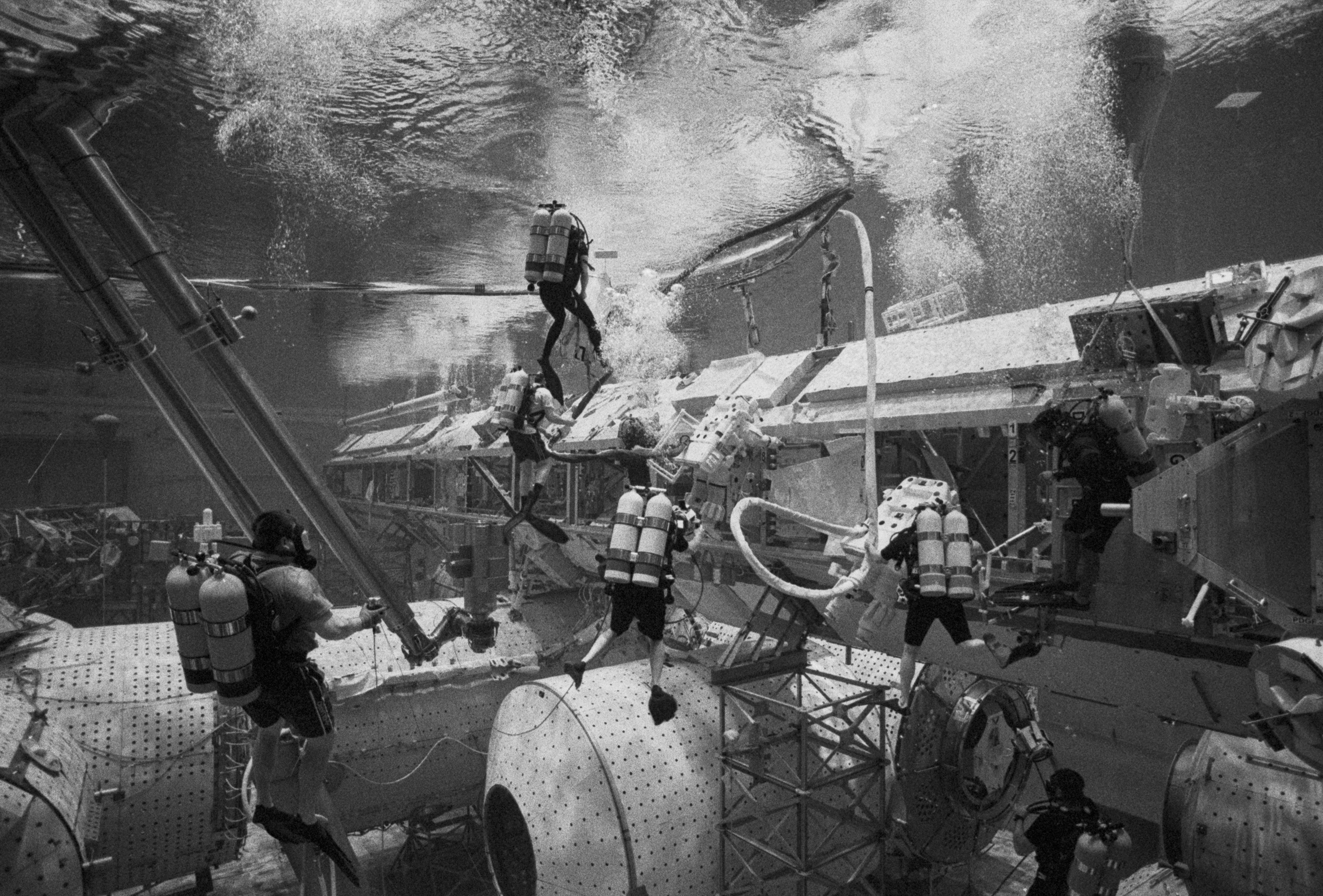Since its establishment in October 1958, NASA has been at the forefront of space flight and space observations, among myriad other tasks. One such facility that undertakes the research and development for Extravehicular Activity/Spacewalks (EVAs), is the Neutral Buoyancy Laboratory (NBL) in Houston, Texas. But what does this laboratory have to do with scuba diving?
What is the Neutral Buoyancy Laboratory?
The NBL, formally known as the Sonny Carter Training Facility, is named after NASA astronaut Manley Lanier “Sonny” Carter who died April 5th, 1991, in a commercial airline accident. Within the gigantic facility, opened in December 1995, are facilities such as a hyperbaric and hypobaric chamber system, medical facility with full medical staff including a resident physician, an engineering office, multiple control centers which represent a small-scale lo-fidelity “mission control,” and a 40-foot (12 m) deep, 6.2-million-gallon pool.
The pool itself houses a 1:1 scale version of the International Space Station, which astronauts train on during their astronaut-candidate training and for build-ups in preparation for assigned flight tasks. It’s estimated that for every hour an astronaut spends on an actual task in space, he or she spends at least 10 hours on that same task at the NBL. To complete their tasks, astronauts rely on the assistance of professional divers. The NBL resident dive team currently employs around 40 full-time dive staff, not including medical, administrative, and maintenance personnel, whose main task is to look out for the safety and well-being of the astronauts.
Who are the Neutral Buoyancy Laboratory scuba divers?
Divers are assigned to astronauts in sets of four: one camera diver, two safety divers and one utility diver. The camera diver films underwater, ensuring that topside safety personnel have an acceptable view of an astronaut’s facial expressions during descent and ascent and can see any signs or symptoms of DCS. While an astronaut is working, the camera diver is also responsible for getting a good angle on their respective worksite. These shots are for the test conductors — those running the show — and the test directors. They make sure procedures are conducted safely and that they meet spaceflight standards.
The safety divers work in pairs and monitor an astronaut’s safety, as their names imply. The safety divers watch all components of the astronaut. They monitor the astronaut’s face, their suit, their tethers, and their voice. These divers are the first responders and must egress the astronauts safely and efficiently when needed. Safety divers also swim the astronauts to and from worksites when they’re inaccessible.
Utility divers also dive in pairs, each following an astronaut. These divers also set up worksites as directed by Flight Leads and others on the NASA team. On any given day, there are far more people in observing the spaceflight training. Guest divers can include any number of dive-certified NASA engineers, fellow astronauts testing and evaluating tasks, or film crews documenting the facility.
The Neutral Buoyancy Laboratory role in training
The NBL’s main priority is to make the astronauts as neutrally buoyant as possible. We do this using rubber-coated lead weights of various sizes/weights, as well as blocks of dense foam. The spacesuits in use at the NBL are all former flight suits. Each has exceeded its shelf-life as a Class I suit and is now a full-time training aid.
The astronauts are weighed-out with these materials via weight packs, placed strategically around their suits. Then, divers place astronauts in one of three orientations underwater: a 45-degree angle facing the floor; on their back parallel to the floor; and on their side(s). Ideally, whenever the divers let go of the astronauts in any orientation, the astronauts will neither sink nor float. There will be no righting moments in any way. This makes the astronaut seemingly neutrally buoyant. Pleural air will inevitably be present in the suit (see Boyle’s Law). This means maintaining the ideal weigh-out is a constant chore.
Astronauts at the NBL spend roughly six hours working nonstop through tasks and scenarios. Divers split this into three two-hour shifts, known as teams. Divers and astronauts breathe a 46-percent nitrox blend, allowing the bottom time required for such training.
Activities at the NBL include more than training men and women for the cosmos. The maintenance facility that adjoins the NBL is home to talented men and women who make components for use in all areas of the facility. The beauty of the NBL lies not only in the magnificent building, pool, and facilities, but also with the entire staff, proud to have even the smallest part in NASA’s mission.
Guest post by Moe Lauchert and John David Narramore
Born in South Korea, raised in Buffalo, New York and residing in Salt Lake City, Utah, Moe Lauchert is a professional photographer, former NASA NBL Diver, and current OWSI. A perpetual student of the sea, he’s never aspiring, always doing. He’s most active during the early light or dusk embarking on the next great adventure. Find more of his images on Instagram.











